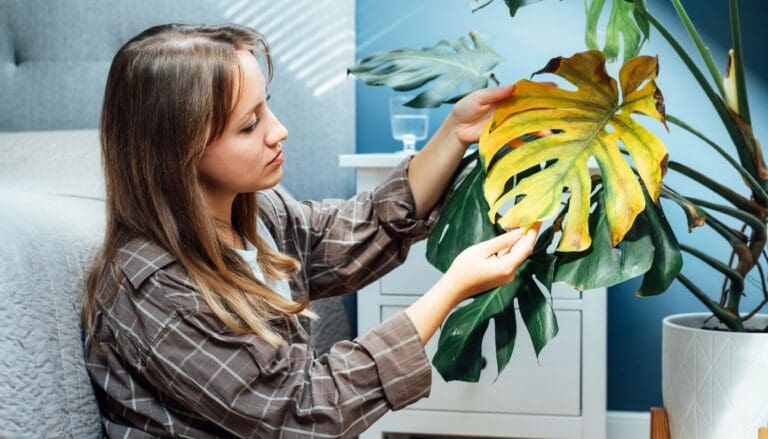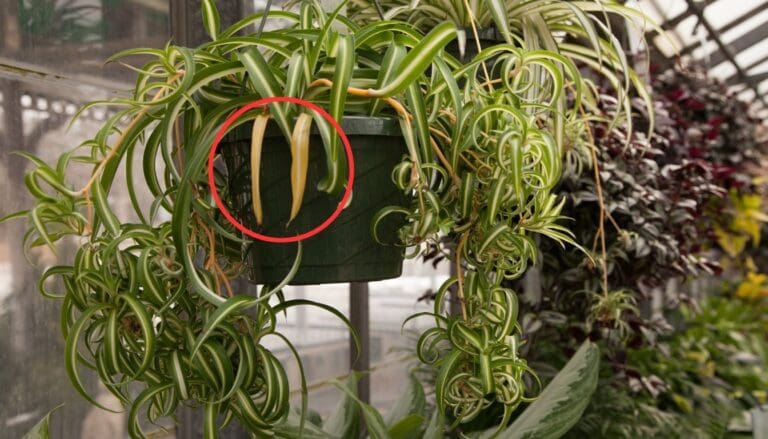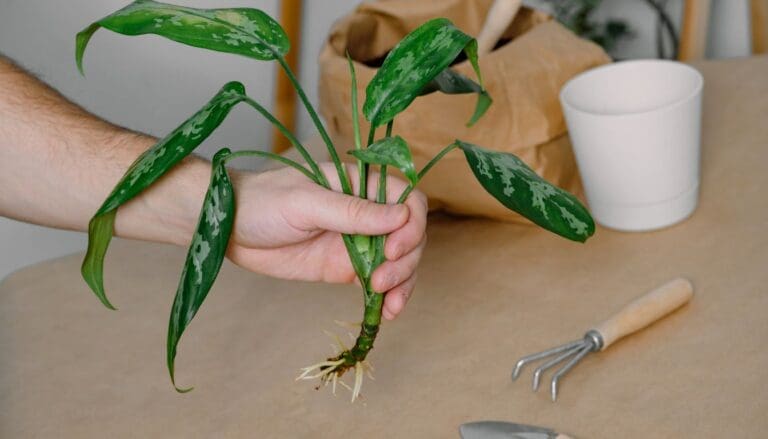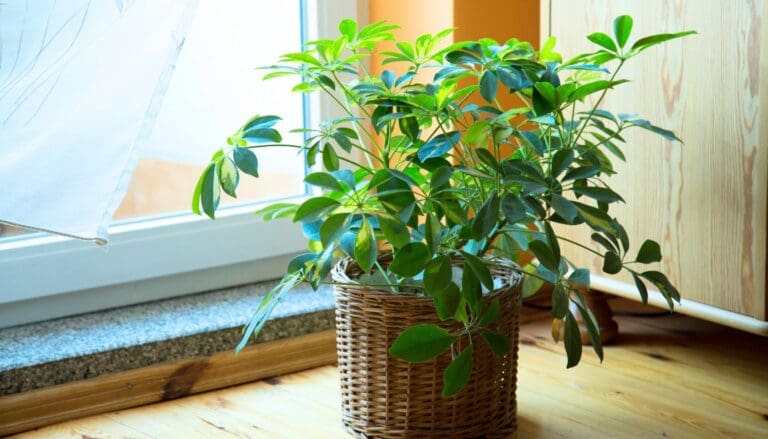Do Schefflera Plants Like To Be Root Bound? (+When To Repot)
Schefflera plants are evergreen plants that come from warm and humid climates. These plants have unique long broad leaves that look like an umbrella, hence known as umbrella plants. If you have one of these, you might want to know if it likes to be root bound. Let’s find out.
In general, Schefflera likes to be root bound to an extent, but it doesn’t prefer to get extremely root bound. The plant will show stunted growth and discolored leaves if root bound for long. To prevent this, you must repot the plant whenever it shows initial signs of root-bound.
This article will simplify whether the Schefflera plant likes to be root bound and how you can treat your plant when this becomes an issue.

Please note: Simplify Plants is reader-supported. Some links in the post are affiliate links and I get a commission from purchases made through links in the post.
Do Schefflera plants like to stay in a small pot?
Choosing the right kind of pot is the most important step to ensuring the overall health of the Schefflera plant.
Usually, it would help if you chose a pot that is a bit bigger than the plant’s root ball.
If you keep the Schefflera plant in a small pot, it will, in a way, help the plant to an extent.
This plant has a good growth rate, so it will have temporary benefits if placed in a small pot.
The small pot will lead the plant’s roots to circle in the soil, becoming root-bound.
This can help your plant to grow flowers.
But if the plant becomes heavily root bound with little to no space left to grow, it will negatively affect its health.
Your plant will have a low growth rate, there will be a lack of nutrients, the soil will dry up quickly, and leaves will wilt.
If you observe such symptoms, immediately make arrangements to repot the plant.
For an overall healthy growth, make sure that your Umbrella plant has ample space to utilize while growing.
How do I know if my Schefflera plant is rootbound?
At first glance, it is difficult to understand whether your Umbrella plant is root bound or not.
A root-bound plant often looks similar to a dehydrated plant.
During the initial stages, your plant may thrive, and you may not notice that your plant is slowly outgrowing the planter.
Unless you pull out the plant from the pot, detecting a root-bound plant in the initial days is not easy.
If you want to detect the root-bound issue, you should look out for the following symptoms:
Drying up

The first symptom will be somewhat similar to the signs of dehydration.
The leaves will become very dehydrated and will slowly begin to lose color.
There will be curling of the leaves as well.
The color might change to dark yellow, turning into brown.
You can keep adding more water to the soil, but your plant will not get cured.
In such a scenario, the plant might have already grown a lot of roots.
The roots are either absorbing the water fast or cannot absorb the water at all due to failure to function properly.
Weak plant
Another important symptom is noticing that your Schefflera is becoming weak.
When the plant looks very weak and uneven, it might be a result of being root-bound.
You may ask why this happens even after providing all the right nutrients.
You would probably have used the best quality of soil or organic materials.
As the roots of the Umbrella plant outgrow its soil medium, it breaks down all the organic materials in the soil and utilizes them.
When the plant outgrows the pot, the soil cannot provide enough nutrients anymore as the plant needs more.
Thus, the plant experiences nutrient deficiency.
If you notice this issue, examine your umbrella plant by taking it out of the pot.
Roots coming out of the pot
This symptom is a sure sign that your umbrella plant has become root-bound.
If the roots start coming out of the planter’s drainage holes, it’s a sign.
Sometimes you can observe that some roots are growing upwards and coming to the surface.
All these signs tell you to check up on the plant’s roots, and it’s probably root-bound.
Examine the roots and see whether some soil is left or if roots have occupied the entire pot.
If you find out that most of the plant pot is congested with roots, then it is time to repot your Umbrella plant.
Cracks in the pot
The pot in which your Schefflera plant is growing can also be another indicator.
Schefflera plants have a good growth rate.
They do not like to be kept in tiny planters for a long time.
If your plant has been in the same pot for some years, you will be able to see signs of it being root-bound.
When the roots grow strong and form a ball inside the planter, it can cause cracks in the clay pots.
When should I repot Schefflera plants?
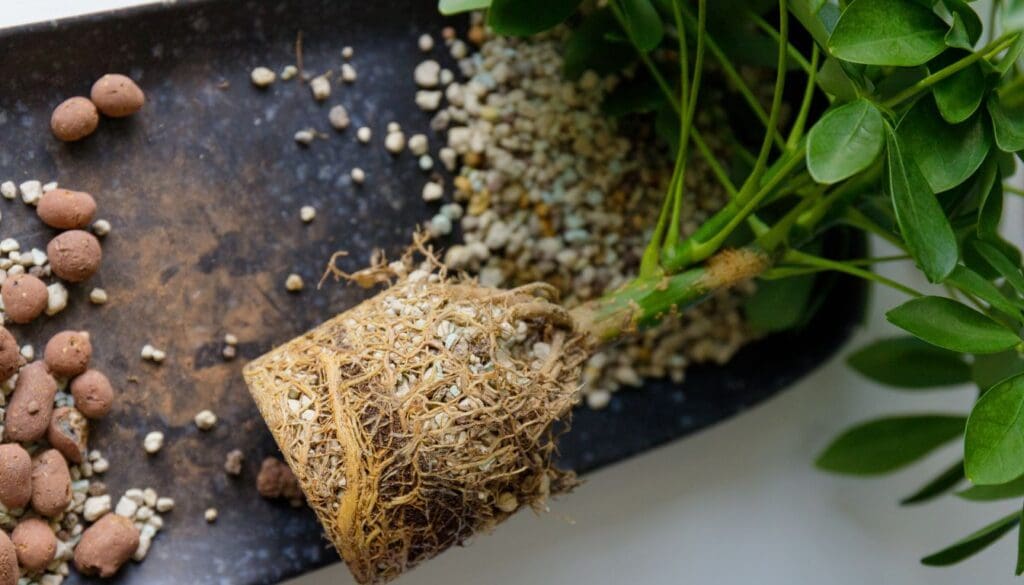
Root-bound signs are difficult to spot, but they will be easy to spot if you pay a little attention to your Schefflera plant.
During the initial stages, you will not see any external symptoms.
As the root-bound issue progresses, you will be able to spot the following signs:
- The growth of the Schefflera plant will reduce.
- Leggy stems and droopy leaves.
- The plant soil will always get dry despite adding a lot of water.
- Clay pots will have cracks on them.
- Roots will start coming out of drainage holes.
- Some of the roots come up to the surface of the soil.
- When you take the Schefflera out of the pot, you will observe roots circling the soil mass.
- In extreme cases, you will see 50-80% roots and a much less soil mix.
How to choose the correct pot for Schefflera plants?
One of the most important steps to ensure a good growth spurt for your Umbrella plant is to choose the right pot.
You have to consider two factors:
- There is no obstacle to the drainage.
- There is ample space for the roots to flourish.
You have to choose a 2-3 inches bigger pot than the last planter.
For example, if you had a pot 11 inches previously, you need to choose 13 or 14 inches.
While choosing the pot, you should also check that the pot is big enough to accommodate the current root ball size.
This will help balance the soil and the root ratio in the pot.
During the initial days, if your plant is small, you can use a pot that has 10 inches in diameter.
Later as it grows, you can keep adjusting the size of the planter.
Also read:
- What Kind Of Pot Do You Use For Schefflera? (Size, Material & More)
- What Kind Of Soil Does A Schefflera Plant Need? (+Ideal DIY Soil Mix)
Different pot materials

- Plastic pots: Plastic pots are good for preventing the growth of bacteria, fungus, molds, etc. But there is a chance it might retain excess moisture, which can cause issues.
- Ceramic pots: You will be able to find a lot of design varieties. These are quite fragile but do not retain excess moisture.
- Clay pots: These are not that durable but allow good airflow and have fewer waterlogging issues.
- Terracotta pots: These are similar to clay pots, ensuring good drainage and airflow. The downside is that terracotta encourages algae growth.
How to save a rootbound Schefflera plant?
When your Schefflera plant becomes root bound, you must take immediate actions to save it.
Being root bound for too long can kill the plant.
Even though the Schefflera plant can bear being lightly rootbound, it is not wise to let your plant be rootbound.
As soon as you find out that the roots are growing out of proportion, you need to save the plant before it is too late.
To save the Umbrella plant, you need to repot it.
To do that, you will need some important gardening tools.
You will need to gather sharp pruners, a pot of adequate size, gloves, and a trowel.
Please follow the steps mentioned below to save your root-bound Umbrella plant:
Observe the plant
You have to begin with carefully examining the plant, the soil matter, and the pot.
You must determine to what extent the damage has spread.
Being root bound, the Schefflera will grow roots from any possible escape it can find.
Check the drainage holes and soil surface.
You may see the tips of roots coming out.
This means you need a bigger pot than the current one.
Removing the rootbound Schefflera
Once you have determined that the plant is rootbound from external signs, the first step is to carefully remove the Schefflera from the pot.
Due to the root-bound situation, the plant root remains in a very fragile condition.
Some of the Schefflera plants might have an extreme issue and can be difficult to remove.
Do the following if you face difficulty in removing the plant:
- You can gently push the soil out with the help of your fingers.
- Hold the bottom of the pot firmly and gently remove the plant with the roots and soil matter. Most of the time, you will be able to get it out in intact condition.
- If roots are growing outside the pot, use a spoon handle to loosen up the roots and lightly shake the pot. This will help you remove the plant and not harm the roots in the process.
- If the pot is made out of plastic material, you can also cut it with a sharp knife. Be careful not to hurt the plant.
Problems with the roots
You should dip the roots and soil part into a big bowl of water that will loosen up the soil from the roots.
Once the roots are properly visible, use chopsticks or a fork or your fingers to detangle the messy roots.
You need to check for roots issues, whether it is brownish in color or smelly.
If you find any mushy, dark, or brownish roots, cut them off with a sharp pair of pruners.
Disinfect the pruner before using.
Only repot the plant with healthy roots.
Root trimming
You need to trim the extra roots from your umbrella plant to ensure that it does not outgrow the new pot.
If you don’t want the plant to grow big, you must trim the roots and repot it in the old pot.
Arrange a potting mix

You can either buy a readymade potting mixture or can make your mix at home.
If you plan to repot the plant in the same old pot, you need to thoroughly clean and disinfect it.
Use your hand or a trowel to mix the soil in the pot and loosen it to allow airflow.
Also, remember always to wear gloves.
The potting mix should allow a good amount of drainage and aeration for the plant.
An ideal soil mix for the Schefflera plant is 2 parts peat moss mixed with 1 part perlite and 1 part compost.
Repotting
Fill the pot only halfway, gently place the plant in the potting mix, and press it slightly.
It would help if you made sure that the roots of the Schefflera plant are not touching the base of the pot.
This will allow some space for the roots to grow downwards.
Next, pour the potting mix/soil into the pot from all sides, covering the roots entirely.
Adding water
Add an adequate amount of water to the soil mix right after transplanting, which will help it to flourish.
After a week or so, you resume the normal watering routine, adding water only if the topsoil is dry.
Final words

To sum it up, it is not a good idea to keep your Schefflera or Umbrella plant to stay rootbound for a long time. It can enjoy being slightly rootbound for a while.
As soon as your Schefflera plant starts showing any external distress symptoms, you should respond and prepare to transplant the plant.
If you ignore the signs, your plant will become weak and have stunted growth. It will show signs of dehydration even after adding water.
Repotting is the only way to ensure the proper health of your plant. You need to trim the roots and prune the plant to encourage further growth. Follow the steps mentioned in the article, and you will be good to go.
Reference: Wikipedia, Sciencedirect, Britannica, American Society for Horticultural Science, Schefflera taxonomic history.
Recommended Garden Supplies
| Product Image | Our Recommended Gardening Supplies | Check Offers! |
|---|---|---|
Top Top
Top
Top
Top
Top
Top
Top
Top | rePotme Houseplant and Tropical Classic Potting Soil Mix | Check Offer On Amazon |
 Top
Top
Top
Top
Top
Top
Top
Top | Espoma Organic Indoor Plant Food | Check Offer On Amazon |
 Top
Top
Top
Top
Top
Top
Top
Top | GooingTop LED Grow Light 6000K Full Spectrum Clip Plant Growing Lamp | Check Offer On Amazon |
 Top
Top
Top
Top
Top
Top
Top
Top | Soil Moisture Meter | Check Offer On Amazon |
 Top
Top
Top
Top
Top
Top
Top
Top | Govee Hygrometer Thermometer, Bluetooth Enabled! | Check Offer On Amazon |
 Top
Top | LEVOIT Humidifiers for Large Room(Best For Plants) | Check Offer On Amazon |
 Top
Top
Top
Top
Top
Top
Top
Top | Upgraded DIY Automatic Drip Irrigation Kit, 15 Potted Houseplants Support | Check Offer On Amazon |
 Top
Top
Top
Top
Top
Top
Top
Top | Stainless Steel Heavy Duty Gardening Tool Set | Check Offer On Amazon |
 Top
Top
Top
Top
Top
Top
Top
Top | Bonide Insecticidal Soap | Check Offer On Amazon |
 Top
Top
Top
Top
Top
Top
Top
Top | Bonide 32 oz Spray Neem Oil for Organic Gardening | Check Offer On Amazon |
 Top
Top
Top
Top
Top
Top
Top
Top | Garden Safe Fungicide | Check Offer On Amazon |



